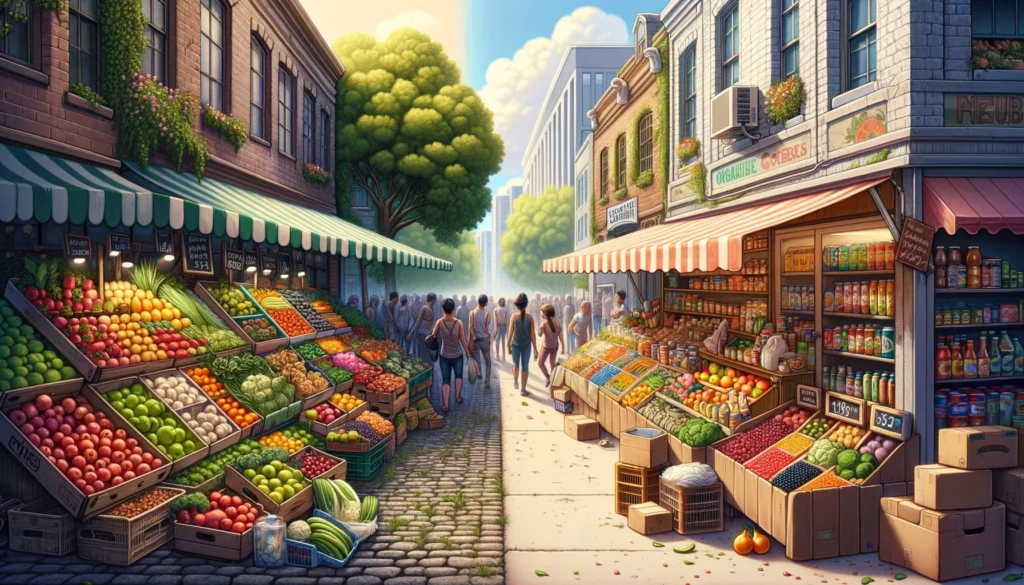Welcome to the first part of our enlightening series on the Sociology of Food. In this segment, we embark on a journey to uncover the deep-seated connections between food and our cultural fabric, delving into how our eating habits are a mirror reflecting societal norms, traditions, and divisions. Food, in its essence, is a narrative of humanity, intertwined with the threads of cultural identity, social class, and global exchanges. Join us as we explore these themes, making this complex topic both engaging and accessible to all.
Cultural Significance of Food
Cultural Identity and Food
Food is more than just sustenance; it’s a language that communicates the rich tapestry of human culture. It has the power to bring people together, encapsulating the essence of cultural heritage and identity. From the aromatic spices of Indian cuisine symbolizing centuries of trade and cultural exchanges to the simple yet profound sushi of Japan reflecting the island nation’s harmony with the sea, every dish tells a story. These culinary practices are central to celebrations and rituals, acting as a bridge between the past and present, fostering a sense of belonging and continuity.

Cross-cultural Food Exchange
The phenomenon of globalization has transformed the world into a global village, where cross-cultural exchanges are commonplace. This integration has significantly impacted food traditions, leading to the proliferation of ethnic cuisines beyond their native borders and the birth of fusion foods. While this has enriched the global culinary landscape, it also poses questions about the preservation of authenticity and the adaptation of food practices in new cultural contexts. The spread of sushi bars worldwide and the popularity of Tex-Mex cuisine are testament to this cultural melding, showcasing how food can bridge diverse cultures.
Food and Social Class
Food Inequality and Access
The divide between different socioeconomic groups is starkly evident in their access to food. Food deserts, areas with limited access to affordable and nutritious food, underscore the glaring disparities in food availability. This phenomenon is often aligned with socioeconomic status, where individuals in affluent communities enjoy a plethora of healthy food options, while those in economically disadvantaged areas face significant barriers to accessing such foods. This disparity not only highlights issues of inequality but also raises concerns about the long-term health implications for those affected.

Gourmet Culture vs. Fast Food Culture
The foods we eat and how we dine can speak volumes about our social standing. The rising gourmet culture, characterized by an appreciation for fine dining and exotic, high-quality ingredients, is often seen as a marker of social status and cultural capital. In contrast, fast food culture, with its emphasis on convenience and affordability, is frequently associated with lower socioeconomic status. This dichotomy reflects broader societal divisions and underscores food’s role as a social indicator.
Author’s Note
As we conclude Part 1 of our exploration into the Sociology of Food, it’s clear that food is a powerful lens through which we can view the complexities of culture and society. It reveals the nuances of identity, class, and globalization in ways that are both profound and everyday. Stay tuned for Part 2, where we’ll delve into the environmental, health, and technological dimensions of food, further unraveling the intricate relationship between our plates and our planet.
G.C., Ecosociosphere contributor.
References and Further Reading
- “Food and Culture: A Reader” by Carole Counihan and Penny Van Esterik
- “Eating Culture: An Anthropological Guide to Food” by Gillian Crowther
- “The Omnivore’s Dilemma: A Natural History of Four Meals” by Michael Pollan
These resources offer deeper insights into the themes discussed, providing a comprehensive look at the cultural and social aspects of food.





Comments
Pingback: Food and Identity: The Sociology of Foodie Culture - EcoSocioSphere
Your article helped me a lot, is there any more related content? Thanks!
Can you be more specific about the content of your article? After reading it, I still have some doubts. Hope you can help me.
I don’t think the title of your article matches the content lol. Just kidding, mainly because I had some doubts after reading the article.